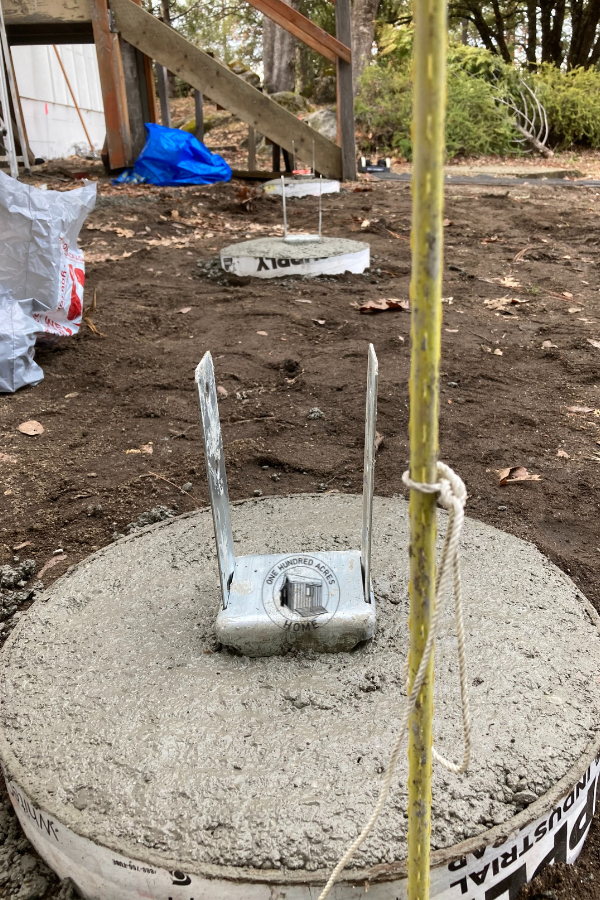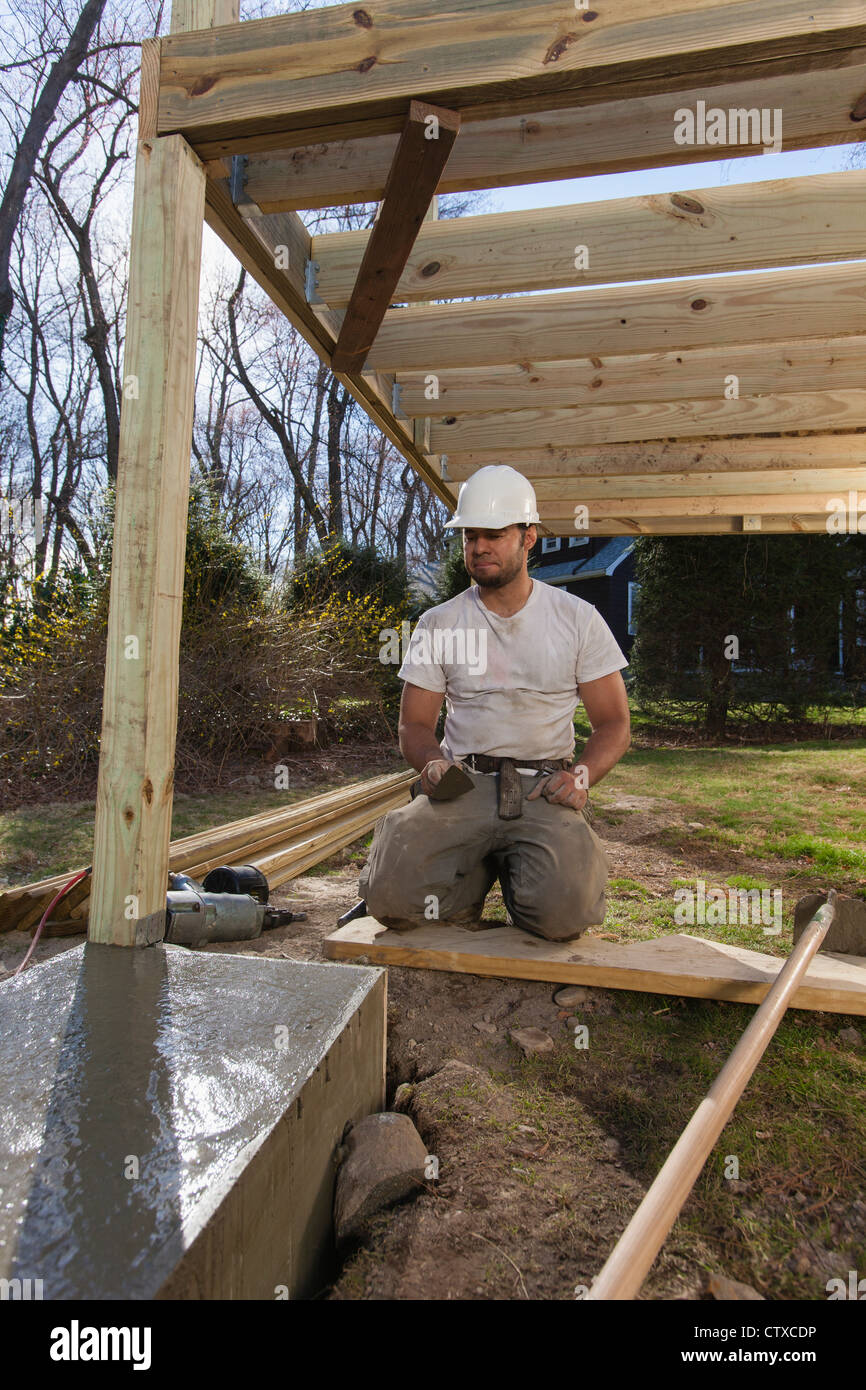Make Best Use Of the Life-span of Your Deck With Dependable and Solid Grounds
In order to fully maximize the lifespan of your deck, it is important to make certain that it is built on reputable and solid footings. These footings develop the structure of your deck, providing security and assistance, and are frequently the distinction between a deck that lasts for years and one that requires continuous fixings. In this conversation, we will discover the relevance of trustworthy footings, the various types of solid footing materials, appropriate setup methods, and just how to maintain and inspect your deck's footings to avoid damage.
Importance of Reliable Grounds
The value of trusted footings can not be overstated when it concerns making best use of the lifespan of your deck. The grounds function as the foundation whereupon the whole framework rests, supplying stability and support. Without a strong ground, the deck is at risk to shifting, sinking, and also collapse, which can substantially decrease its lifespan and present security dangers.

Picking the right type of footing is also vital. Employing a specialist to analyze the dirt, layout the grounds, and make certain correct installation is highly recommended.
Purchasing dependable footings might involve additional cost and effort upfront, yet it is a rewarding financial investment that will certainly add to the lasting sturdiness and safety of your deck. By making sure a solid structure, you can appreciate your deck for years ahead, recognizing that it is built to endure the test of time.
Sorts Of Solid Footing Materials
To make certain the security and long life of your deck, it is important to take into consideration the numerous sorts of solid ground materials available. The selection of footing material is essential as it provides the essential assistance and stability to hold up against the weight and tons of the deck structure.
One trusted and typical material made use of for deck footings is concrete. Concrete grounds are long lasting and offer excellent security. They can be poured straight into the ground or use precast concrete grounds for simpler installment. An additional alternative is helical piers, which are steel shafts with helical plates that are screwed into the ground. These piers provide outstanding load-bearing capacity and can be made use of in numerous dirt problems.
For areas with bad soil problems, such as loosened or large soils, a footing system that makes use of steel or composite piers might be preferred. Deck Footings. These piers are driven deep right into the ground to reach secure soil layers, making certain the stability of the deck
Sometimes, deck grounds can also be built using cured lumber. It is essential to guarantee that the lumber is effectively treated to resist rot and degeneration created by exposure to dampness and bugs.
When choosing a footing product for your deck, it is essential to think about factors such as soil problems, environment, and local building ordinance. Consulting with a specialist specialist or architectural designer can aid establish one of the most ideal ground product for your details deck task.
Proper Installation Methods for Grounds
Thinking about the value of making certain security and resilience for your deck, it is important to comprehend the appropriate installment strategies for grounds. The success of your deck task counts greatly on the honesty of its foundation, which is why adhering to the right installment strategies is essential.
First and foremost, it is required to identify the proper size and deepness of the grounds based upon the layout and tons needs of your deck. This details can be acquired from developing codes or via appointment with a structural designer. As a basic regulation, grounds must go to the very least 12 inches in size and extend below the frost line to stop resolving or changing.
As soon as the measurements are established, the next action is excavation. Digging the holes for the grounds must be made with precision, ensuring they are deep enough and have a degree bottom. Deck Footings. This will certainly offer a stable base for the grounds
To even more enhance the security of the footings, it is recommended to make use of a concrete combine with a strength of at the very least 3,000 psi. This will certainly make certain the grounds can hold up against the weight and pressures applied by the deck.
Throughout setup, it is essential to maintain the grounds degree and lined up appropriately. This can be accomplished by utilizing a level and string lines to direct the positioning of each ground.
Maintaining and Examining Your Deck's Footings
Normal maintenance and extensive assessments are crucial for making certain my review here the long-lasting security and security of company website your deck's grounds. Gradually, footings can catch tear and wear, weather condition conditions, and soil activity, which can jeopardize their architectural stability. To optimize the life expectancy of your deck's grounds, it is crucial to execute a routine upkeep regimen and perform comprehensive assessments.

Furthermore, it is crucial to check footings for any type of indicators of damage or damage. This includes monitoring for cracks, splits, or collapsing concrete, in addition to any indicators of motion or settlement. Any kind of problems should be attended to quickly to avoid additional damage and ensure the security of the deck.
Moreover, it is recommended to evaluate the bordering soil for any signs of disintegration or shifting. Soil activity can affect the security of the footings, so it is necessary to deal with any kind of soil-related issues quickly.
Indications of Ground Damage and Exactly How to Address Them
An additional indicator of footing damage is falling apart or cracking of the concrete footings. If you observe any kind of splits or wear and tear in the grounds, it is important to have them examined and fixed by a specialist. Remember, addressing footing damages click this link without delay can help guarantee the lasting security and safety of your deck.
Final Thought
In conclusion, guaranteeing the reliability and strength of footings is crucial for taking full advantage of the life-span of your deck. By making use of solid ground materials and correctly installing them, you can avoid damage and keep the security of your deck.
These grounds create the structure of your deck, offering stability and support, and are often the distinction between a deck that lasts for decades and one that calls for continuous repairs. In this conversation, we will certainly explore the importance of reliable grounds, the different kinds of solid footing materials, proper setup techniques, and just how to preserve and examine your deck's footings to stop damage.Regular maintenance and complete evaluations are important for making certain the long-lasting stability and security of your deck's footings. Keep in mind, attending to footing damages quickly can aid guarantee the lasting stability and safety and security of your deck.
By utilizing solid footing materials and appropriately installing them, you can stop damage and preserve the security of your deck.